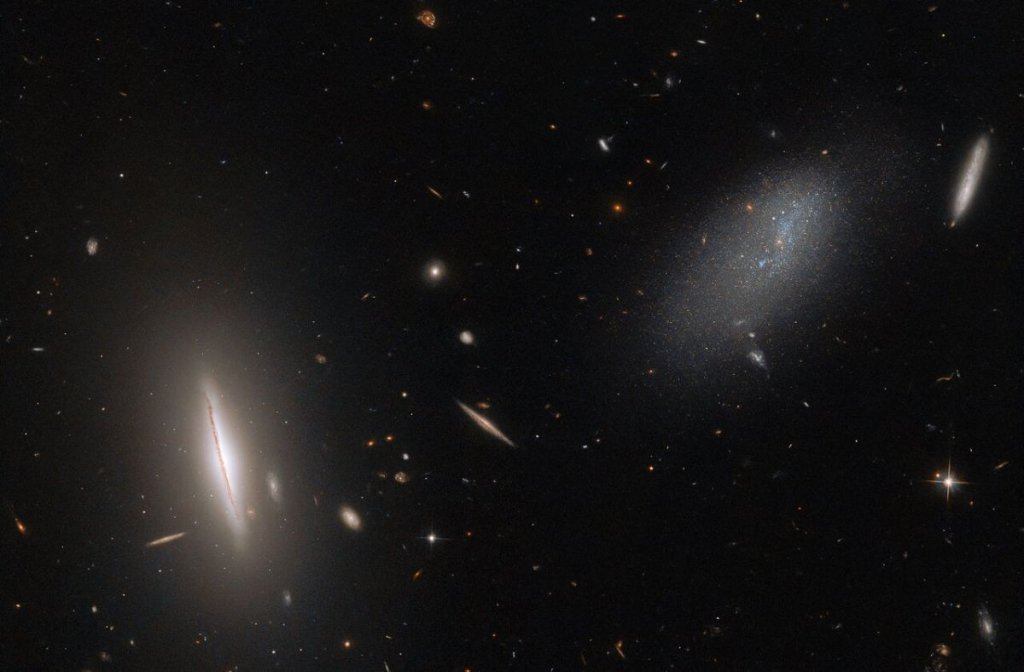
Hubble Space Telescope spies odd pair of galaxies near Big Dipper (photo) (Image Credit: Space.com)
A new image from the Hubble Space Telescope proves that astronomers don’t have to look very far to find something astonishing.
The galaxy LEDA 48062 lies 30 million light-years from our own Milky Way galaxy, a short distance in cosmic terms. LEDA 48062’s smudge-like form looks especially amorphous in a new Hubble Space Telescope image, which shows the galaxy next to the more classically disk-shaped galaxy UGC 8603.
“By getting to know our galactic neighbours, astronomers can determine what types of stars reside in various galaxies and also map out the local structure of the Universe,” European Space Agency officials wrote in an image description (opens in new tab) published Jan. 9. (NASA and ESA are partners on Hubble’s mission.)
Related: The best Hubble Space Telescope photos of all time

Galaxies are one of the basic units of the cosmos. They are where stars live, die and leave behind the building blocks for the next generation of stars and planets to soak up. Galaxies have different shapes, and this fact has implications about how unique or common our corner of the cosmos might be. Surveying galaxies then becomes essential.
And there are so many in this one Hubble image. It depicts a scene in the constellation Canes Venatici (opens in new tab) (the Hunting Dogs), near the Big Dipper. In addition to the pair of prominent, albeit contrasting, galaxies in the foreground, the Hubble photo is populated with a sea of background galaxies of different shapes and distances.
Our own galaxy is also visible, in a way. Wherever the eye is drawn to a bright speck with four spikes, the observer is looking at a star within the Milky Way. The spiky stars don’t actually emit light in that manner; rather, the lines are created as their light interacts with hardware within the Hubble Space Telescope.
“Have you ever wondered why the stars in Hubble images are surrounded by four sharp points? These are called diffraction spikes, and are created when starlight diffracts — or spreads around — the support structures inside reflecting telescopes like Hubble,” ESA officials wrote.
“The four spikes are due to the four thin vanes supporting Hubble’s secondary mirror and are only noticeable for bright objects like stars where a lot of light is concentrated on one spot. Darker, more spread-out objects like the galaxies LEDA 48062 and UGC 8603 do not possess visible diffraction spikes.”
Since last year, ESA and NASA have used the state-of-the-art infrared sensitivity of their newest telescope, the James Webb Space Telescope, to complement Hubble’s galactic observations.
Follow Doris Elin Urrutia on Twitter @salazar_elin (opens in new tab). Follow us on Twitter @Spacedotcom (opens in new tab) and on Facebook (opens in new tab).





